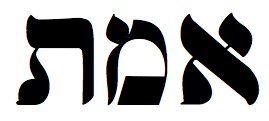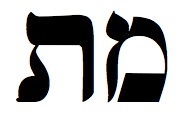The Magick of the Golem
“The Golem” by Philippe Semeria
The most famous story of a Golem takes place in the 16th century. The Jews of Prague experienced tremendous examples of anti-Semitism. This was not merely insults or anti-Jewish symbols scrawled on the side of synagogues. It included direct physical attacks known as pogroms. The Holy Roman Emperor, Rudolf II, demanded that the Jews of Prague should either leave the city or die. The Jews called on the chief rabbi of the city, Judah Lowe ben Bezalel, for help.
Rabbi Lowe created a man from mud and used Kabalistic magick to bring the giant figure to life. At first, the Golem just protected the Jews from attack. As time went on, the Golem become more violent, attacking and killing non-Jews and then Jews.
The Emperor begged Rabbi Lowe to stop the creature, telling him he would rescind the orders against the Jews. The Rabbi agreed, and used magick to end the Golem’s existence, but he stored the body in the attic of the synagogue should it ever be needed again.
So how was the Golem activated? The most popular method is a traditional form of Kablistic talismanic magick. Supposedly, Rabbi Lowe wrote the Hebrew word emet, truth, on the forehead of the Golem.
 “EMET”
“EMET”
Emet is a fascinating word. The first letter, Aleph (on the right), is the first letter of the Hebrew alphabet while the final letter, Tav (on the left), is the last letter of the alphbet. The middle letter, Mehm, is the middle letter of the alphabet. Thus, emet is symbolically the beginning, middle, and end of all things. According to the numerological system known as Gematria, the total of the word is 441. If you add the digits together you get 9. Nine is interesting because if you multiply any number by nine and add the digits of the result until you get just one digit, that digit is always 9, implying that 9 is the truth behind numbers.
To take away the life from the Golem, Rabbi Lowe erases the first letter of emet forming the word met which means “dead.”
“MET”
Met also means a dying person or a corpse. The Gematria of the term is 440, which also relates to words meaning bitter and exiles.
An alternate version of the story has Rabbi Lowe writing the emet on a piece of paper which is held in place by a plug. Removing the paper results in the death of the Golem.
This description is straight talismanic magick. The letters have power, and by changing or destroying the letters you remove the power. The talisman is “brought to life” to produce a result and then destroyed or changed (purified) to stop the magick.
Not That Simple
Of course, magick isn’t really that simple. Although the contents and meaning of words in books have changed people and societies, simply writing letters isn’t going to cause a magickal result. You have to charge those letter or symbols. When writing the first five books of the Bible known as the Torah, scribes are supposed to say certain prayers and think certain thoughts, making the Torah an incredibly powerful talismanic object. If you attend a ritual in a synagogue where the Torah is brought out, it is treated like a powerful magickal object: it is held in a protective cover, walked around the room (circumambulation), and people will reverently touch it as it moves around the room. We therefore, can assume that Rabbi Lowe was probably saying prayers and thinking certain thoughts as he created the talisman or words that would enliven the Golem.
Today, when people make a talisman, they often spend so much time and effort planning, designing, and creating the object that they literally empower the talisman as they create it. I frequently receive letters and email from people wondering why they achieved the goal of their talisman before they charged it. The reason, of course, is because all of the work they did essential charged it during its creation. However, most people will still do some sort of ritual to charge their talisman and bring it to life. When it has achieved its goal they will discharge it or destroy it.
Charging a Talisman
So how do you charge a talisman after it’s created? With a ritual, of course. Simply reading some words out of a book won’t do the trick, however. According to some authorities, during the Middle Ages Kabalists examined the early book, The Sefer Yetzira, looking for clues as to words and concepts that could be used to enliven the Golem. Playing with the words and letters in the book supposedly induces an ecstatic experience which provides the desired result.
And that’s the key. It’s not merely reciting words. It’s using the appropriate words and ritual actions to achieve an altered state of consciousness, sending your energy, modulated by words and symbols, to the talisman so it becomes a living thing that will do what you want. Ritual has to be living, exciting, and stimulating to work. Rote recitation of words might be theater, but it’s not true magickal ritual. While theater has its own value, a rituals has to have passion for it to become magick!
Beware YOUR Golem!
In the story of the Golem, the creator of the creature eventually loses control and the creature designed for good becomes a harmful terror. This message is carried on in other stories that some believe are based on the myth of the Golem, including Frankenstein by Mary Shelly, Goethe’s The Sorcerer’s Apprentice (original German title: Der Zauberlehrling), and in numerous stories of robots, ranging from Asimov’s classic I Robot, to Čapek’s 1921 play, R.U.R. that introduced the word “robot.”
When doing magick it’s important that you stay in charge and in control. One way to do this is through planning. Perform a divination before working any practical magick and then make sure the talisman is thoroughly cleansed, banished or destroyed when you finish using it. With such planning you can allow yourself to lose control to the energies during the ritual because you have controlled the design of the ritual. And that allows the magick to work.
For full details, see my Modern Magick.












Awsome article ! History, Magick & Gaint Killa protectors ! This is what keeps the Magick interesting & Ongoing ! It would be nice to have some Gaint Kick some Douche bags … Today ! Next UFC for Golems!Just Kidding ! LoL. Love History but Seeing is believing. But I believe much of what these things were Fears based on Xenophobia.
In reference to Emeth=441, 441 is also 21 squared. 21=AHIH which is the great “I AM”, or even the essence of existence. So 441 would literally be the existence of existences.